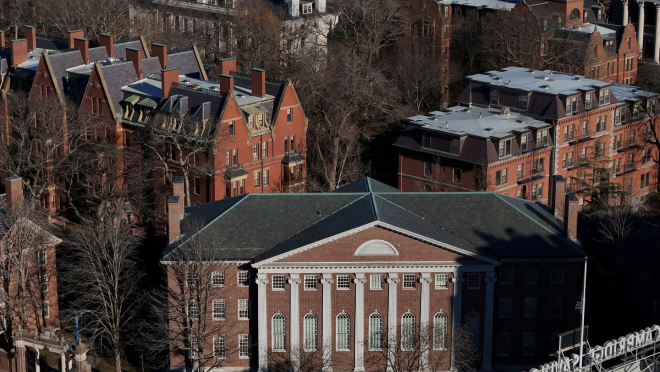Beyond Harvard: Where international students might head next
Beyond Harvard: Where international students might head next

For decades, the U.S. has been regarded as the top destination for international students. Its globally ranked universities, post-graduate work opportunities, and rich research landscape have drawn a record-high 1.12 million international students, who collectively contribute over $50 billion to the U.S. economy, according to data from the State Department.
However, weeks of volatile visa policies have cast doubt on that reputation, reports Forbes. Most recently, the Trump administration moved to strip Harvard University of its ability to enroll international students—a decision that has since been blocked temporarily by a judge. Yet the damage to perception may already be done. A destabilised higher education system could drive prospective students elsewhere, regardless of how legal battles play out. At the same time, institutions like Harvard and other major research universities have lost billions in research funding, leading to fewer opportunities for international graduate students. Rising tuition costs have added another burden—pushing the total cost at some universities past $100,000—prompting many international students, who typically pay full tuition, to question whether a U.S. degree remains a worthwhile investment.
A shifting landscape
Faced with uncertainty in the U.S., international students may instead choose other Anglophone destinations such as the U.K., Canada, and Australia, which also offer globally recognised degrees and post-study work opportunities. But these countries, too, are reassessing their openness.
In the U.K., following a surge in international student numbers, public opinion on immigration has begun to sour. The government is considering cutting the post-study work visa from two years to 18 months for both undergraduate and graduate students, according to the U.K. Council for International Student Affairs. Additionally, since 2024, most international graduate students have been barred from bringing dependents with them on student visas—a move reported by Times Higher Education as a blow to a higher education sector already facing financial stress.
Canada, long praised for its welcoming policies, has also begun to tighten its borders. The federal government has imposed a cap on international student enrolments for at least two years. Previously, the international student population was so significant that it made up 2.5% of Canada’s total population, noted ICEF Monitor, an international education market intelligence platform.
In Australia, international students made up 27.1% of university enrolments as of 2019, according to the country’s Parliament. But the government has since introduced limits on international student numbers and raised visa application fees, according to Reuters. While these policy shifts aim to curb net migration, the uncertainty they create is relatively minor compared to the upheaval in the U.S.
Against this backdrop, international students are starting to consider newer, less traditional destinations for study—places that are actively recruiting global talent as part of national strategies.
The rise of non-traditional study destinations
Many countries with ageing populations and declining birth rates are turning to international students to fill university seats and, eventually, workforce gaps. As the number of domestic high school graduates falls, these countries are repositioning themselves as attractive alternatives for global learners.
Japan, for example, has seen the number of 18-year-olds nearly halve over the past 30 years, according to The Hechinger Report. The country aims to enrol 400,000 international students by 2033. South Korea—where one in five residents is 65 or older, per CNN—has set a target of attracting 300,000 international students by 2027, reports ICEF Monitor. Hong Kong, Taiwan, and Malaysia have announced similar ambitions, while Singapore has recently relaxed rules for international students applying for permanent residency, according to Financial Express.
Even India, which now sends more students abroad than China, wants to reverse that flow. It has set a goal of hosting 500,000 international students by 2047, reports The PIE News.
Across Europe, many ageing societies are taking similar steps. Germany and Spain have both reported record-high international student enrolments in recent years. Though the number of English-taught programmes at universities in these countries remains relatively limited, the appeal lies in affordability. For example, annual tuition in Japan averages around $4,000, according to ICEF Monitor—making a four-year degree there cost less than a single year at a private university in the U.S.
What lies ahead
As traditional study destinations rethink their policies and global perceptions shift, the range of viable study destinations has expanded. Some U.S. universities, meanwhile, are setting up branch campuses abroad to work around visa complications and retain international enrollments.
In response to President Trump’s proposed restrictions, certain institutions around the world are stepping in. The Hong Kong University of Science and Technology, for instance, announced it would offer spots to international students from Harvard who are forced to leave or who had planned to attend.
“The university will provide unconditional offers, streamlined admission procedures, and academic support to facilitate a seamless transition for interested students,” the school stated on its website.
As international education becomes more uncertain in historically dominant destinations, students are seeking alternatives that offer not only academic excellence but also stability and long-term value. The future of global education appears to be less centralised and increasingly diverse—shaped more by pragmatic choices than by tradition.


